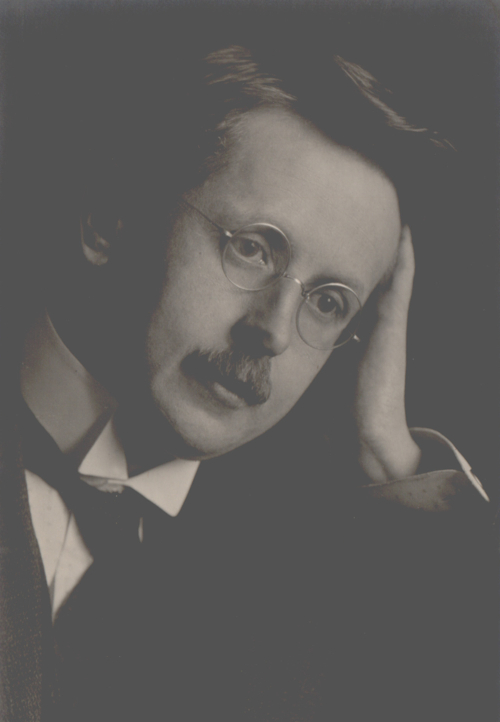
This article is a translation of “Hermann Weyl: itinéraire d’un parcours scientifique et intellectuel” written by Christophe Eckes for the French mathematics magazine Images des Mathématiques, and is published here with permission.
The German mathematician Hermann Weyl (1885–1955) is an essential witness to assess the complexity of the development of mathematical sciences during the first half of the 20th century. His name is attached to three institutions: the University of Göttingen (1904–1913, then again from 1930–1933), the ETH in Zurich (1913–1930) and the Institute for Advanced Study in Princeton (1933–1951). This article explores how deeply he was related to the intellectual and scientific world of Göttingen, from his training years in that university (1904–1908) until his exile to the United States in 1933 after Hitler’s coming to power.
Hermann Weyl’s contributions in pure mathematics cannot be circumscribed by one specific subject, nor to one specific theory. Nonetheless, one aspect that remained invariant in his work was that he was essentially interested in theoretical frameworks which involve an integration of several fields such as integral equations, Riemann surfaces, analytic number theory, differential geometry, representation theory of finite groups and Lie groups, and even geometry of numbers. Consequently, his work resulted in an enduring interest in mathematical physics.
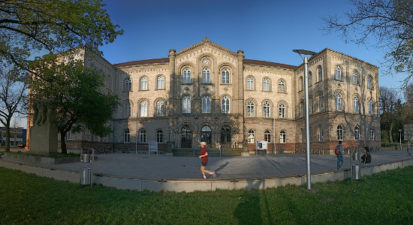
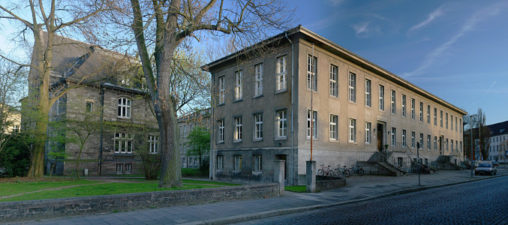
Soon after 1916, he took part in the mathematization of general relativity, and from 1918 he even tried to extend it by setting up a unified theory of gravitational and electromagnetic fields. There were no less than five editions of his monograph Raum, Zeit, Materie devoted to relativistic theories,1 that appeared between 1918 and 1923.
In the middle of the 1920s, he started redirecting his research towards quantum mechanics, and in 1928 he published his second monograph in mathematical physics, namely, Gruppentheorie und Quantenmechanik. As the name suggests, it is a systematic treatment of applications of group theory to quantum mechanics. Throughout his career, he took part in debates between mathematicians and logicians about the foundations of mathematics. In fact, he incessantly intended to shed light on his mathematical works by philosophical reflections built on a wealth of references: Kant’s critical philosophy, Fichte’s idealism and Husserl’s phenomenology. In 1913, Weyl married Helene Joseph, a student of Husserl’s in Göttingen. She helped him understand Husserl’s phenomenology better.
Weyl at the University of Göttingen
From the beginning of the 20th century, the University of Göttingen was considered, with good reason, as one of the main research centres in mathematical sciences in the world.
An important series of actions initiated by Felix Klein towards the end of the 19th century help us understand how many significant mathematical developments occurred in that institute. First of all, Klein’s recruitment policy turned out to be very fruitful: People like David Hilbert joined the University of Göttingen in 1895, followed by Hermann Minkowski in 1902. Further, Klein’s institutional policy led to a steady increase in the number of mathematics students during the years 1892 to 1914. Therefore, between 1892 and 1914, the University of Göttingen had 18 Privatdozenten in mathematics, including Weyl from 1910 to 1913.2 Klein was also proactive in starting research institutes in applied mathematics and in physics. Indeed, he aspired to unify mathematical sciences and physics. Thus, when Weyl joined the University of Göttingen as a student in 1904, the university was outstanding in its attractiveness and deep dynamism, in terms of research and teaching, both in mathematics and physics. Eventually, together with Heinrich Weber and Franz Meyer, Klein initiated a vast programme of publishing authoritative texts called Encyclopaedia of Mathematical Sciences which, from the end of the 19th century, reinforced the international profile of Göttingen. This project remained active until the beginning of the 1930s, long after Klein had died.
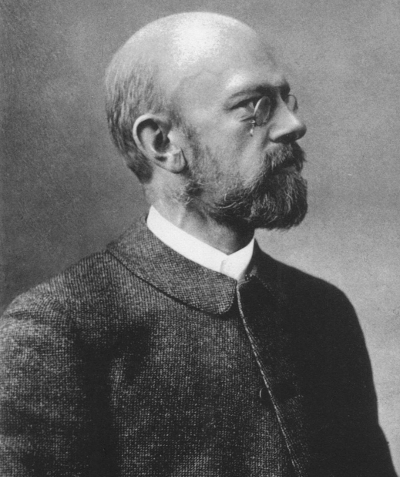
Weyl’s work and the articles he published between 1908 and 1913 show that he felt a deep and complex attachment to his alma mater. Five names must be mentioned here: Hilbert and Klein, of course, but also Minkowski, Paul Koebe, and Ernst Zermelo. Weyl defended his doctorate in 1908 and his habilitation thesis, or Habilitationsschrift, in 1910 both under Hilbert’s supervision. Several articles he published in 1910 are taken from his habilitation thesis. Weyl dedicated himself to the theory of integral equations, which was then Hilbert’s main research theme. One observes that PhD candidates and young researchers were forming a school around Hilbert on this topic. Amongst them were Erhard Schmidt, Ernst Hellinger, Otto Toeplitz, and of course, Weyl.
In addition, in his habilitation thesis which is devoted to the definitions of mathematical concepts, Weyl refers to the first pages of Hilbert’s Grundlagen der Geometrie (1899), and is convinced by Zermelo’s work on foundations of mathematics.
In 1908, Zermelo formulated an axiomatic system that bore enough constraints to prevent paradoxes that had plagued naive set theory. Moreover, in 1913, Weyl published a monograph about Riemann surfaces entitled Die Idee der Riemannschen Fläche, derived from an advanced course he gave during the winter term 1911–1912. In this book, he proves again the uniformization theorem which can be stated as follows: every simply connected Riemann surface is conformally equivalent to either the complex plane, the open unit disk, or the Riemann sphere.3 This result was proved in 1907 by Henri Poincaré, and independently by Paul Koebe, during the time the latter was a Privatdozent at the University of Göttingen (1907–1910). Die Idee der Riemannschen Fläche was dedicated to Klein, who, through his reflections in epistemology and in mathematical education, had a significant influence on the young Weyl. Eventually, after Minkowski’s death in 1909, Weyl and Andreas Speiser were responsible for the publication of his complete works in 1911, under Hilbert’s direction. In particular, Weyl knew Minkowski’s results on the geometric foundation of special relativity, which was popular as early as 1909.
Certainly, Hilbert’s work holds a considerable place in Weyl’s earlier work. But in the curriculum vitae he wrote for his recruitment at ETH Zürich in 1913, he also acknowledged Minkowski’s influence. Weyl brought popularity to Minkowski’s works about the mathematics of special relativity in 1907 and 1908 via his Raum, Zeit, Materie (Space, Time, Matter). It is therefore oversimplifying to think that Weyl was exclusively a follower of only Hilbert, when he published his first articles in 1908–1910. On the contrary, Weyl’s early works reflect the full range of the complexity and diversity of mathematics at Göttingen at the beginning of the 20th century, such as the foundations of geometry, geometry of numbers, integral equations, Riemann surfaces and uniformization theorem, geometrization of special relativity, set theory, etc. Moreover, Weyl remained deeply attached to the University of Göttingen until he exiled himself to the United States in 1933. Indeed, while he was at ETH in Zurich from 1913 to 1930, he kept close relations with the school of mathematical physics in Göttingen. In particular, he devoted himself to the formalisation of general relativity, essentially between 1917 and 1923. Then in 1925, this pursuit further encouraged him to initiate a correspondence with the theoretical physicists Max Born and Pascual Jordan, who were working in Göttingen on the foundations of quantum mechanics at the time. Eventually, Weyl was recruited in 1930 at the University of Göttingen when Hilbert retired, and he stayed there until 1933.
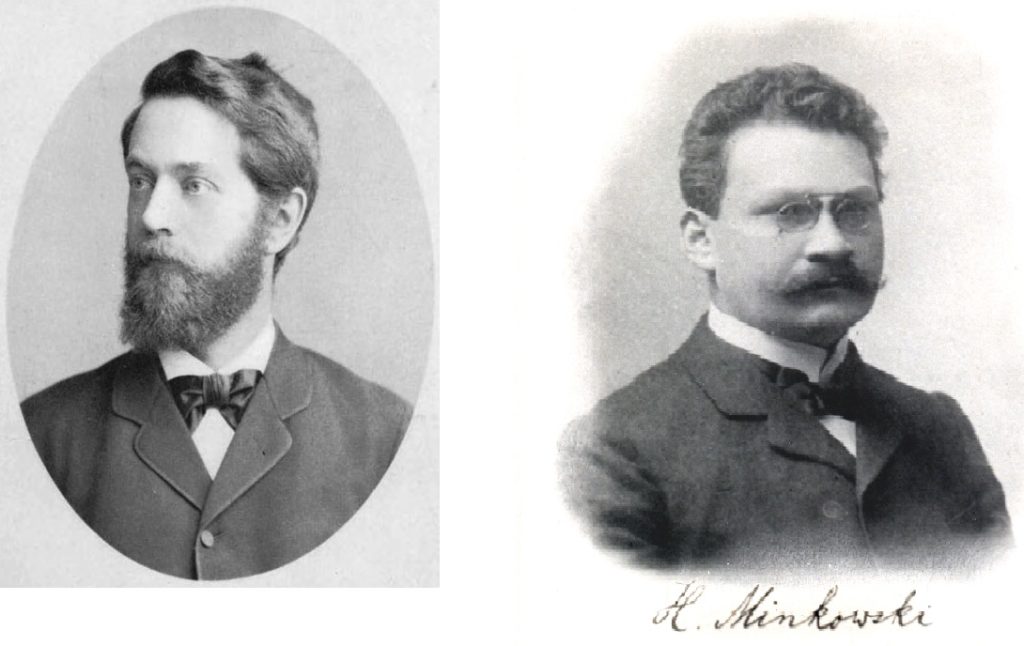
Weyl at ETH in Zurich: Mathematical Physics and Pure Mathematics
Weyl’s scientific trajectory at ETH can roughly be divided into four periods.
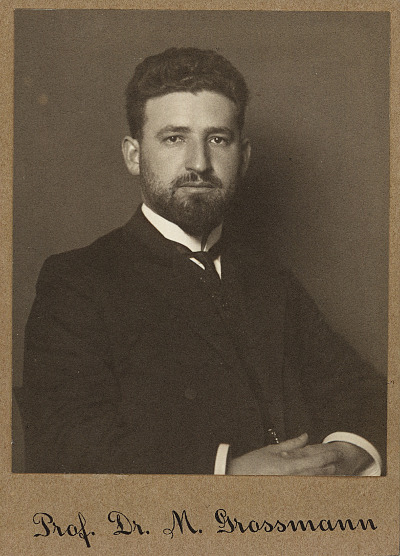
(1) Between 1913 and 1916, Weyl pursued research in the theory of topological surfaces and Riemann surfaces, and also in number theory, continuing his work at the University of Göttingen. However, the First World War tragedy, with which he was associated between the spring of 1915 and the spring of 1916,4 marked a turning point in his scientific and intellectual career. Around the same time, he renounced any kind of positivism, and he reoriented himself towards special and general relativity.5 This pursuit was in keeping with his academic years in Göttingen, since he knew Minkowski’s work very well. Moreover, one of his colleagues at ETH was none other than Marcel Grossmann, who, around 1912–1913, had started to work on the mathematical formulation of general relativity with Einstein.
(2) Around 1916, Weyl read Einstein’s foundational paper “The Foundation of General Relativity Theory”.6 The following year, he proposed a course of differential geometry from which his famous monograph Raum, Zeit, Materie in special and general relativity was derived. In its structure, it was devised to address physicists as well as mathematicians. Weyl, however, did not limit himself to Einstein’s theory of gravity in his research. From 1918, he aimed at building a unified theory of gravitational and electromagnetic fields, which he presented in a systematic way in two articles, before integrating them into the third edition of Raum, Zeit, Materie. This large project opposed the scientific and epistemological critiques by Einstein, Reichenbach, Pauli, Hilbert, etc., who turned out to be justified eventually.7 Indeed, Weyl’s theory was mathematically conceivable, but it had no empirical ground.
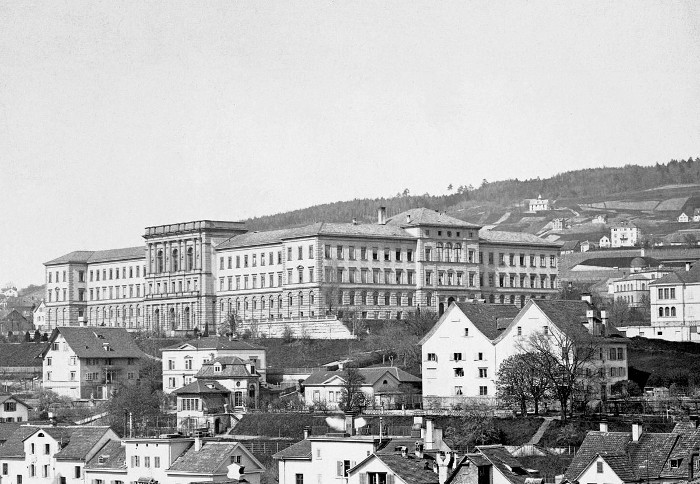
Weyl acknowledged it progressively from 1921 onwards. This failure explains why his research efforts were reoriented towards pure mathematics. Moreover, after 1918, Weyl was involved in the debate between L.E.J. Brouwer and Hilbert about the foundations of mathematics. Brouwer considered Hilbert a formalist, in the sense that Hilbert would manipulate symbols without meaning, and with no indication whatsoever about how to effectively construct the mathematical objects they are supposed to refer to. Brouwer claimed to adhere to intuitionism, which meant not only that his mathematical knowledge relied on some intuition, but also that he demanded exacting standards in mathematical reasoning. For instance, for Brouwer, non-contradiction was not sufficient to guarantee the existence of a mathematical object—one had to provide effective procedures to construct it.
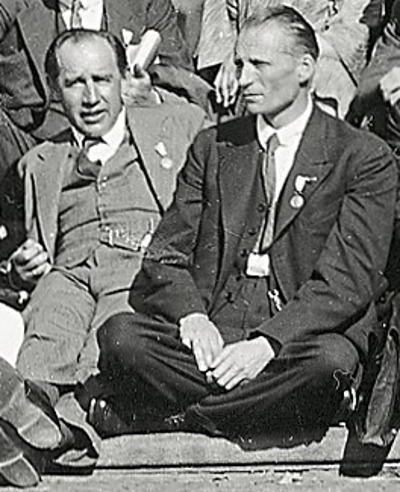
Moreover, Brouwer initiated the project of constructing a system of logic that would not appeal to the “law of the excluded middle” for infinite sets. This principle means that for any proposition p, either p is true or its negation \bar{p} is true, and there is no other possibility. As Largeault8 explains:
From an intuitionistic point of view, the negation of an existence statement or a universal statement about an infinite number of objects is not necessarily determined, so that the law of excluded middle cannot be taken for granted.
Weyl embraced Brouwer’s intuitionistic views in 1919, before he established a kind of middle ground between intuitionism and formalism after 1924.
(3) Around the same time, the essence of Weyl’s work focussed on the theory of Lie groups and their representations. This new direction was in particular provoked by his careful reading of Élie Cartan’s thesis from 1894.9ses présentées a la Faculté des Sciences de Paris pour obtenir le grade de docteur és sciences mathématiques (1894).
Cartan was a mathematician with whom Weyl had numerous intellectual exchanges after the fourth edition of Raum, Zeit, Materie was translated to French in 1922.
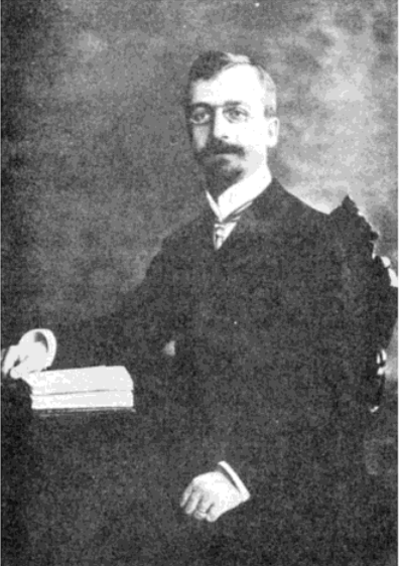
At the same time, he maintained a fruitful correspondence with I. Schur, who showed him the importance of Hurwitz’s methods in formulating a representation theory of certain Lie groups. Weyl’s researches culminated in his imposing article in four parts on Lie group representations, the most significant result of which is the complete reducibility of representations of complex semisimple Lie algebras.10
(4) It must be stated that at the same time, Weyl was close to Erwin Schrödinger, who worked at the University of Zurich from 1921 to 1927. As mentioned above, Weyl kept up his correspondence with Born and Jordan all through 1925. He also exchanged a few letters with Werner Heisenberg, who had first worked in Göttingen with Born, then later in Copenhagen with Niels Bohr, before signing up for Leipzig in 1927. Finally, he had an extensive correspondence with John von Neumann from 1925 to 1931. The latter was Privatdozent in Berlin and Hamburg from 1926 to 1929, before multiple stints in Princeton, until he was hired at the Institute for Advanced Study in 1933. All these associations allowed Weyl to assimilate many points of view on the foundations of quantum mechanics. But Schrödinger and Paul Debye, the two specialists in quantum mechanics in Zurich at the time, left respectively for Berlin and Leipzig in 1927.
Weyl decided to modify the contents of his course in group theory at ETH in 1927–1928. While it was initially devoted to the purely mathematical aspects of the theory, Weyl’s course described a series of applications in quantum mechanics. Heisenberg, Eugene Wigner, and von Neumann independently followed a similar trajectory during that same period.
The first edition of Gruppentheorie und Quantenmechanik came straight from Weyl’s course. It was proofread by von Neumann, and was published in September 1928. It showed Weyl’s new incursion into mathematical physics that was to last until the early 1930s. In this book, Weyl constantly referred to empirical data in order to keep himself from repeating the mistake he had made between 1918 and 1921: to build a mathematically attractive, but physically irrelevant theory. Just like his Raum, Zeit, Materie, Weyl’s monograph on quantum mechanics addressed mathematicians and physicists. Nevertheless, several physicists, such as Schrödinger, expressed their scepticism, or even a certain form of hostility, such as that shown by Born, towards the group-theoretical methods in quantum mechanics. More generally, it turns out that group theory was then little known to physicists, and that they considered it more as an artefact that could be avoided in formalising quantum mechanics.
In a letter written on 25 January 1928, the American mathematician Oswald Veblen (1880–1960) requested Weyl to come to Princeton University as an invited professor and mathematical physics chair, for the academic year 1928–1929.11 In this letter, Veblen alluded to Weyl’s important contributions to differential geometry, general relativity, and unified field theory. At that time, Veblen belonged to the Princeton school of differential geometry, with Luther P. Eisenhart and Tracy Thomas.12
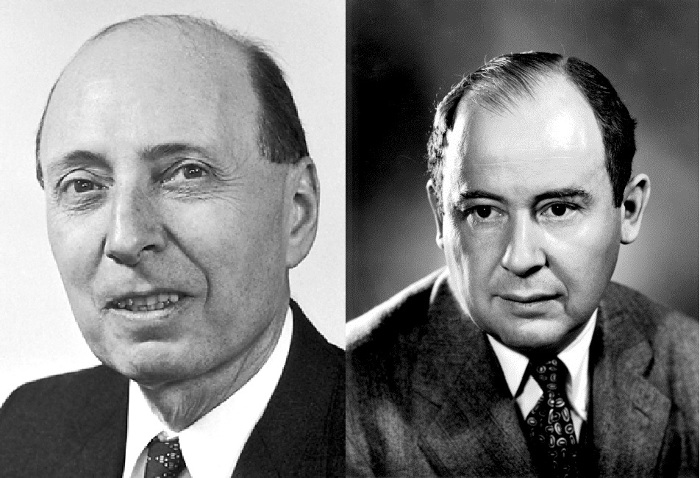
The creation of this chair came from Princeton University’s goal of bringing the departments of physics and mathematics closer together. Veblen added that after this stay, Weyl could become tenured if he wished. The official invitation signed by Veblen and Karl Taylor Compton was sent a few days later. It elaborated on their motivation to develop a school of mathematical physics in Princeton, modelled on the one in Göttingen, which they found exemplary. Weyl accepted the offer and joined as an invited professor in mathematical physics. During the winter semester, he offered a course on the foundations of quantum mechanics, and he insisted on translating it in terms of group theory; the course he gave during the spring semester pertained to pure mathematics, which dealt with group theory in a general sense. At the end of the year, Weyl refused the permanent position Veblen had suggested in his first letters, and he temporarily went back to ETH in Zurich. In fact, this turndown indicated Weyl’s attachment to the University of Göttingen, where he was officiated, in 1930, replacing Hilbert.
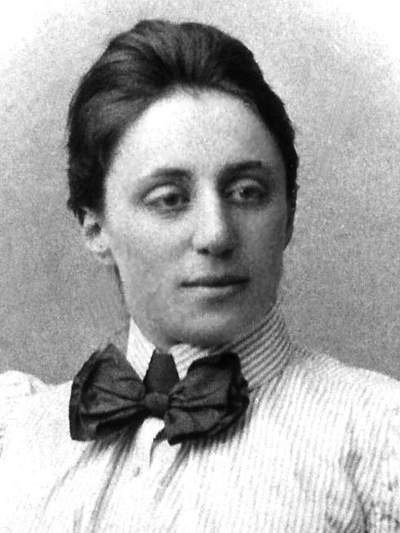
Let us remember that the building of the Mathematical Institute of Göttingen, built with the support of the Rockefeller Foundation, was inaugurated on 2 December 1929. Courant was to be its president until his exile in 1933.
During the inauguration, Weyl delivered a speech in honour of F. Klein in front of the mathematical society of Göttingen.13 He emphasized more on Klein’s character as a mathematician than on his institutional role in the development of mathematical sciences in Göttingen. For Weyl, one of the essential characteristics of Klein’s work was to unify, step by step, very different areas of mathematics to solve a single problem. Weyl’s speech shows that he considered himself as one of Klein’s descendants: far from favouring a single mathematical field—in particular, abstract algebra—he preferred to build new mathematics by combining methods arising from different theoretical areas, in a “Kleinean” tradition.
Soon after he was hired as a professor in Göttingen, Weyl sparked a controversy towards those he called the “algebraists”, as is indicated by his speech on topology and algebra in October 1931 in front of the Swiss society of high school teachers.14, 38: pp. 177–188. I: Amer. Math. Monthly. 1995. 102(5): 453–460; II: Amer. Math. Monthly. 1995. 102(7): 646–651. The German version is reproduced in GA III, pp. 348–358. A notable person in the audience was Emmy Noether, who was then his colleague at the University of Göttingen was well aware of his
criticism against abstract algebra. Weyl thought, somewhat pessimistically, that the developments of abstract algebra lead to such levels of generality that one ended up losing sight of any mathematical content. He even borrowed Polya’s expression “generalisation by dilution”, in order to criticise vehemently some supporters of abstract algebra, one among whom was E. Noether. Paul Alexandroff and Weyl’s accounts show that she found Weyl’s position biased and excessive. Our goal here is not to settle the controversy, but to show that it conveys a feeling of relative isolation when he was in Göttingen.15
Adhering to a Kleinean mathematical tradition, as his 1929 inauguration speech shows, he refused to consider abstract algebra as a model field, the methods of which could be extended progressively to all areas of mathematics. Nevertheless, one should temper the controversy triggered by Weyl in 1931, by considering his own works. In fact, his chapter on group theory in his monograph about quantum mechanics is nothing but an exposition of abstract algebra that is not so different in its style from Van der Waerden’s Modern Algebra (1930–1931). It is therefore necessary to consider the gap between Weyl’s discourses on mathematics and his own practice, which shows that he acknowledged the effectiveness of abstract algebra, be it only to formulate quantum mechanics.
The accession of the Nazis to power in March 1933 had particularly dramatic consequences on the mathematical institute of Göttingen. As N. Schappacher16 notes:
The disintegration of the mathematical institute of Göttingen in less than eight months, between April and November 1933, is bound to draw attention for more than one reason: because of the exceptional importance of the institute as a mathematical centre, as well as how quick and radical the destruction was. At the time, nowhere else was an institute of comparable size annihilated by the Nazis.
The German Law for the Restoration of the Professional Civil Service, which was the first law set up by the Nazis against the Jews, was promulgated on 7 April 1933. It allows the destitution of civil servants of Jewish background or of those politically hostile to the national-socialist ideology. Initially, the law did not apply to people who had been inducted into the professional civil service before World War I, or who had served during World War I.17 In fact, tenured professors18erordentlicher Professor, did not. Courant,19 Bernstein, E. Landau,20 who were supposed to be un-concerned were eventually forced to resign and go into exile, as well as E. Noether, who was asked to resign although she was not tenured.21 Courant appointed Neugebauer22 as his successor. But the latter refused to pledge allegiance in front of the Nazis, and he too left Germany. In October 1933, Weyl, who was visiting ETH in Zurich, refused to go back to Germany. In particular, a new law on 30 June 1933, that modified the rules for civil servants, now forbade anyone with a “non-Aryan” spouse from enlisting as a civil servant; it was reinforced in 1937 by a law demanding “the revocation of civil servants in post with a non-Aryan spouse”.23 Weyl accepted the invitation from the Institute for Advanced Study, Princeton, because his wife was Jewish, and he did not want to be detained in Göttingen by the Nazi regime. He made his decision official in a letter to the Ministry of Science, Art, and Popular Culture on 9 October. Here24 is an excerpt:
Please accept my resignation from the tenured professor of mathematics in Göttingen, as well as all the functions attached to it, for the rest of the year. I am willing to give up all my rights, stipends and retirement, starting at that moment, as soon as my resignation has been accepted, and that nothing prevents my family and my properties from leaving to America.
Of the five tenured professors at the mathematical institute of Göttingen, the only one who remained by the end of 1933 was G. Herglotz. As J. Olff-Nathan explains,25 when in 1934:
B. Rust, the new Secretary of Science, Education and Popular Culture of the Reich, asked the mathematician David Hilbert if his institute in Göttingen had really suffered from the departure of the Jews and the Judenfreunde (Jews’ friends), the latter replied: “Suffered? But it has not suffered, sir! It does not exist anymore!”
Hilbert’s account shows how brutal and how quick the destruction of the Mathematical Institute of Göttingen was.
Princeton University, the Mathematical Institute of Göttingen and the IAS
The Institute for Advanced Study was founded in 1930 by A. Flexner, who was its director until 1939. The IAS was first hosted in Fine Hall, the building of the department of mathematics of Princeton University, before it was granted its own building, known as Fuld Hall, in 1939.
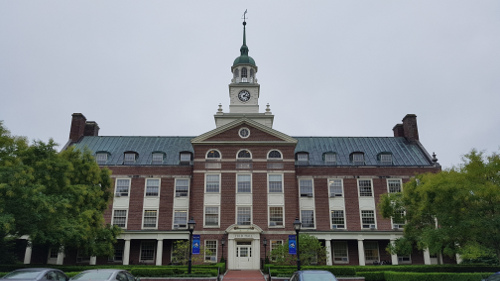
Flexner announced the creation of the first school of IAS, the School of Mathematics, during the autumn of 1932. Its first member was Veblen. Einstein, von Neumann, Weyl, and Gödel joined IAS in the year 1933. Weyl stayed there until he retired in 1951.
During this period, his research and his courses remained very varied: representation theory of topological groups and Lie groups (1934–1935), invariant theory (1935–1937), the origin of his famous monograph Classical Groups (1939), algebraic number theory and geometry of numbers (1938–1942), to which one can add courses on integral equations, hydrodynamics, and function theory. His courses from 1946–1949 were the basis of the extensive lecture series he delivered on symmetries in 1951, just before he retired. He showed the transversal character of symmetries and group theory by looking in turn at ornamental art, crystallography, Galois theory, etc. He also alluded to physical theories he had studied during his career such as special relativity, general relativity, and quantum mechanics. The study of symmetries thereby enabled him to efficiently integrate his work in mathematics and physics, using his a priori expertise in mathematics.
Mathematics and Philosophy
One of the last texts Weyl wrote is entitled “Axiomatic versus Constructive Procedures in Mathematics”. Written after 1953, and published for the first time in 1985,26 this text recounts Weyl’s Hilbertian and Kleinean heritages during the period of his education in Göttingen. It also recounts his reservations about the axiomatic methods, which should necessarily be completed by procedures that allow one to effectively construct mathematical objects, instead of being satisfied with formal manipulations of meaningless symbols. Most of all, Weyl insisted on the complementarity between scientific activity and philosophical reflection, which is a legacy of his intellectual trajectory.27
Science without philosophy is blind; philosophy without sciences is sterile
It seems to me that in the intellectual life of men two spheres can be distinguished, the one that of doing, shaping, constructing, creating something, in which the active artist, scientist, technician, statesman move, the other that of reflection where the meaning of all this activity is questioned and which one may consider the proper domain of the philosopher. Creative activity, if not supervised by reflection, is in danger of running away from all meaning, of losing contact and perspective, of degenerating into routine, whereas the peril of reflection is that it becomes mere irresponsible “talk about”, thus paralyzing the creative power of man.26
This argument sums up and sheds light on the deep interdependence of mathematics and philosophy in Weyl’s own work. A few lines below, that he added is somewhat intriguing; 28 it can be found in other texts published shortly before he died:
Kierkegaard once said religion deals with what concerns man unconditionally. In contrast (but with equal exaggeration) one may say that mathematics deals with things which are of no concern to man at all. Mathematics has the inhuman quality of being starlight, brilliant and sharp, but cold. But it seems to be an irony of creation that man’s mind knows how to handle things better the farther removed they are from the centre of his existence. Thus we are cleverest where knowledge matters least.
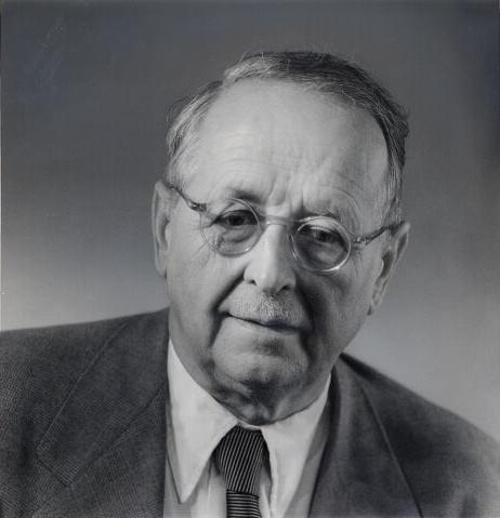
Weyl does not say here that mathematics is “useless” to man. He is well aware that his argument is hyperbolic and should not be interpreted literally. The image of “starlight” shows the fascinating character he attributes to mathematics. However, he argues that mathematics in itself is not self sufficient; in fact, he constantly emphasizes through his writings that mathematics and philosophy need to be systematically correlated, lest losing oneself in abstract entities which are as seductive as they are disembodied. Weyl does not arbitrarily refer to the Danish philosopher Kierkegaard: he shows his attachment to a philosophy of existence that he refuses to separate from his activity as a mathematician, even though these two points appear diametrically opposed.
Footnotes
- H. Weyl. Raum, Zeit, Materie. Berlin, Springer eds, 1918.. ↩
- For more details on these data, see D. Rowe. “Klein, Hilbert and the Göttingen Mathematical Tradition”. Osiris, 2nd Series, 1989. Vol. 5: p. 202.. ↩
- For more details, see Uniformisation des surfaces de Riemann, retour sur un théorème centenaire, signed under the collective name of Henri Paul de Saint-Gervais, Lyon, ENS éditions, 2010. English translation by Robert G. Burns: Uniformization of Riemann Surfaces: Revisiting a Hundred-year-old Theorem. European Mathematical Society, Heritage of European Mathematics, 2016.. ↩
- Weyl was summoned for military service in 1915, from which he was exempted in 1916.. ↩
- Positivism is a philosophical school of thought which dictates that information derived from sensory experience, interpreted through reasoning and logic, constitutes entirely all certain knowledge.. ↩
- A. Einstein. Die Grundlage der allgemeinen Relativitätstheorie (The Foundation of General Relativity Theory). Annalen der Physik. 1916. 49: pp. 769–822.. ↩
- Weyl’s reply to Einstein’s criticism was the following: The real behavior of measuring rods and clocks (atoms and atomic systems) in arbitrary electromagnetic and gravitational fields can be deduced only from a dynamical theory of matter, elaborated in: Norbert Straumann. Gauge Principle and QED. arXiv preprint hep-ph/0509116 (2005).. ↩
- J. Largeault. Introductory note to Weyl’s 1929 article “Consistency in Mathematics”, in H. Weyl, Le continu et autres écrits. Introduction and translation by J. Largeault, Paris, Vrin ed., 1994: p. 162.. ↩
- É. Cartan. Sur la structure des groupes de transformations finis et continus, Th{\`e. ↩
- H. Weyl. Theorie der Darstellung kontinuierlicher halbeinfacher Gruppen durch lineare Transformationen (Representation theory of continuous semisimple groups by linear transformations). I, Mathematische Zeitschrift, 23, pp. 271–309.. ↩
- Veblen’s letters to Weyl are reproduced in: G. Frei and U. Stammbach. Hermann Weyl und die Mathematik an der ETH Zürich 1913-1930, Basel, Boston, Berlin, Birkhäuser, pp. 101–103.. ↩
- For more details, see J. Ritter. “Geometry as Physics, Oswald Veblen and the Princeton School”, in K.-H. Schlote, M. Schneider (dir.), Mathematics Meets Physics: A Contribution to their Interaction in the 19th and the First Half of the 20th Century. Frankfurt am Main, Harri Deutsch ed., pp. 145–179.. ↩
- H. Weyl. Felix Kleins Stellung in der mathematischen Gegenwart. Die Naturwissenschaften. 1930. 18: pp. 4–11, GA III, pp. 292–299.. ↩
- H. Weyl. Topologie und abstrakte Algebra als zwei Wege des mathematischen Verständnisses. (Topology and Abstract Algebra as Two Roads of Mathematical Comprehension.) Unterrichtsblätter für Mathematik und Naturwissenschaften. ↩
- This isolation is documented by N. Schappacher in “Questions politiques dans la vie des mathématiques en Allemagne (1918-1935)”, in J. Olff-Nathan (dir.), La science sous le troisième Reich. Paris, éd. du Seuil, 1993, p. 86.. ↩
- Ibid., p. 56.. ↩
- Ibid., p. 54: “By virtue of the racist article 3, all non-Aryan civil servants can be dismissed—unless they are concerned by the exception rules of the text, written at the request of the Association of Jewish Veterans. These measures spared the `non-Aryans’ who were already civil servants before August 1914… and the veterans of World War I.”. ↩
- The title of tenured professor, or ordenlichter Professor, meant that Landau, Bernstein and Courant had the status of civil servants at the University of Göttingen, while E. Noether, who was only au{\ss. ↩
- Courant was a World War I veteran.. ↩
- Bernstein and E. Landau were hired before 1914.. ↩
- Ibid., p. 57. ↩
- See the article “Otto Neugebauer (1899–1990)” in Images des Mathématiques by Christine Proust.. ↩
- Ibid., p. 86. ↩
- The letter is entirely reproduced in N. Schappacher, op. cit., p. 79 sqq.. ↩
- J. Olff-Nathan. Introduction to La Science sous le Troisième Reich, op. cit., p. 8. ↩
- H. Weyl. “Axiomatic versus Constructive Procedures in Mathematics”, edited by T. Tonietti. The Mathematical Intelligencer. 1985. 7(4): 12–17, and 38.. ↩
- Ibid., p. 267. ↩
- Ibid., p. 267. ↩
